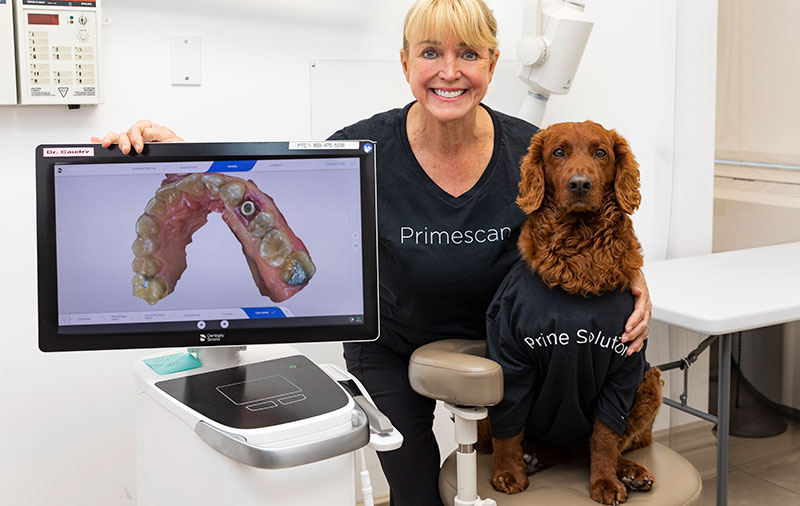We all think dental implants are a silver bullet solution to our oral troubles-but that isn't the case. As wonderful as dental implants might be, they are not invulnerable. Despite their durability, they can still crack, chip, and become infected. In times such as those, people need to seek out a dental implant restoration expert.
What does dental implant restoration entail? What are the primary causes of dental implant failure, and what can you expect in the pre-operative and post-operative stages of the procedures? The team working under the esteemed Dr. Suzanne Caudry is here to answer all of these questions and more.
Read this blog post on dental implant restoration at your leisure. Direct any questions or comments you might have to our team by posting in the comments below or dialing (416) 928-3444.
What Is a Dental Implant?
Before we dive into the problems that might arise after receiving a dental implant, we think it is best to give readers a crash course on what dental implants are and other key aspects of dental implantology.
Dental implants are artificial teeth, but they are not like dentures. True to their name, these artificial teeth are surgically placed into the patient's jawbone, making them a permanent replacement for natural teeth. The implant itself is a small titanium screw that acts like the tooth's root. The crown, fastened onto the abutment, is what we see when we look at the smile of a person with dental implants. Crowns are designed and sculpted to suit a patient's mouth to perfection. It is no wonder that so many people have come to embrace dental implants.
Dental implants hold lots of promise for patients. They can restore people's smiles to their former glory. In some cases, they might even make smiles look better than ever before. With well-designed and properly placed dental implants, chewing food is no longer a chore, and people find that their self-confidence reaches untold heights. In short, natural-looking dental implants yield many benefits for patients.
Dental Implant Troubles
Once we secure a dental implant in a patient's jaw, the natural-looking artificial tooth is subject to the same troubles as a real tooth. Without proper care, their oral cavities are at risk of falling victim to bacterial infections.
If bacterial infections and other oral issues go unaddressed for long, the dental implant might become infected. When infections arise, oral surgeons must do what they can to rescue the dental implant. The process resembles the cleaning and ongoing maintenance of our natural teeth, with a host of antibacterial treatments, deep scaling sessions, and more.
Signs Your Dental Implant Has Failed
It takes a professional to determine the right course of action when a dental implant has been compromised. That said, there are many signs any individual can look out for. Visit a dentist if you detect any of these issues:
- Numbness around implant
- Tooth pain
- Loose implants
- Uncharacteristic sinus problems
Are you experiencing any of these symptoms? Is it getting harder and harder to brush your teeth without making your gums bleed? Consult your local dentist or periodontist. They will be able to put you on a treatment plan that works for you.
Peri-Implantitis and How to Treat It
One of the most severe infections that can impact the implant area is peri-implantitis. Peri-implantitis is a bacterial infection that affects the gums that surround the implant area. The infection typically manifests as a loss of supporting jawbone, excessive bleeding, and the appearance of puss. Those who leave the infection untreated often wind up losing their dental implant.
Don't worry, peri-implantitis does not typically come out of nowhere. Some factors and scenarios that put individuals at risk of developing peri-implantitis include:
- Smoking
- Poor oral hygiene
- Pre-existing Periodontitis (also known as gum disease)
- Chronic health issues
- And more
How do we treat peri-implantitis after detecting it? There are several approaches that most professionals can offer their patients. One approach is known as antibacterial irrigation, which involves your periodontist flushing out bacteria and plaque from the hard-to-reach crevices between teeth and gums. If you have already experienced excessive bone loss as a result of infection, the implant might be removed. After removing the implant, your periodontist will put you on a bone regeneration treatment plan. This will involve the application of various antibacterial treatments.
After your periodontist has concluded that your teeth and gums are healthy enough to endure a bone graft procedure, they will perform a bone graft to strengthen the jawbone. Once the dental bone graft has healed, you will be able to receive your new, healthy dental implant without worry.
Dental Implant Restoration and Repair
There are times when a dental implant may chip or crack. As durable as dental implants might be, they have been known to fall victim to the same issues as natural teeth. A bike accident might result in a damaged implant, and a hard piece of food might send you to the local dentist for a viable solution.
In times such as these, you will rarely have to replace the entire implant itself. More likely than not, your periodontist will just repair the crown of the implant. Qualified dentists are usually able to repair the chip or crack by applying a strong composite material. You can have your dental implant looking as good as new in little time at all.
Learn More About Dental Restoration Today
Do you have more questions about dental implants, peri-implantitis, or the work that periodontists like us do? Don't hesitate to ask them. We are always available to field the questions and concerns of the people in our community. Optimal oral health doesn't just improve your teeth and gums-it improves your overall quality of life in numerous ways.

